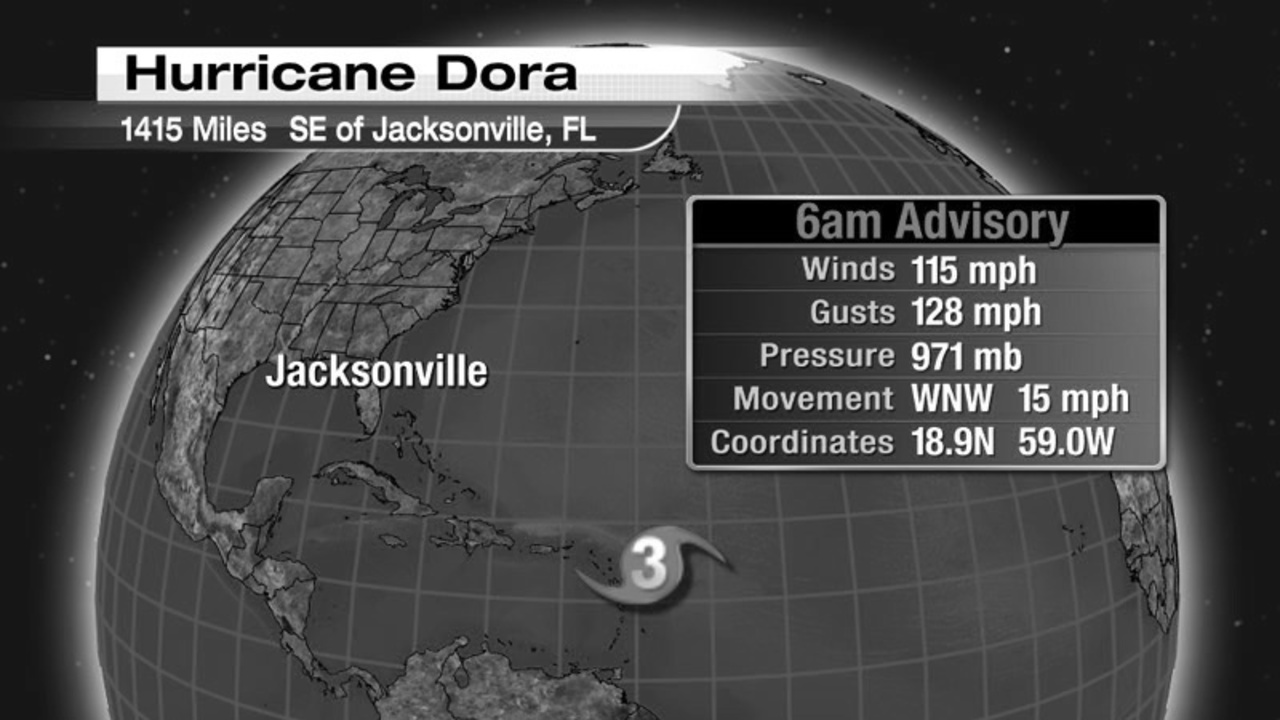On August 31, I pointed out that our greatest danger would be from a full-force hurricane striking our coast from the Atlantic.  On September 1, tropical storm Dora formed 2,500 miles away in the tropical Atlantic. It became a hurricane the next day, then a major hurricane with 115 mph winds by September 3 and moved on a track toward Bermuda.
On September 1, tropical storm Dora formed 2,500 miles away in the tropical Atlantic. It became a hurricane the next day, then a major hurricane with 115 mph winds by September 3 and moved on a track toward Bermuda.
Recommended Videos
 On September 9, with Dora's sustained winds 125 mph as it moved erratically toward the coast, our news department was continually updating reports from the beach and inland communities, the Civil Defense and Red Cross offices, area police and fire departments, and the Jacksonville Electric Authority.
On September 9, with Dora's sustained winds 125 mph as it moved erratically toward the coast, our news department was continually updating reports from the beach and inland communities, the Civil Defense and Red Cross offices, area police and fire departments, and the Jacksonville Electric Authority.

 The U.S. Weather Bureau radar map shows the deviation of Dora's eye (black line) towards the north as the storm encountered the Gulf Stream. This probably caused the Hurricane Center to place the center of Dora east northeast of St. Augustine, moving northwest.
The U.S. Weather Bureau radar map shows the deviation of Dora's eye (black line) towards the north as the storm encountered the Gulf Stream. This probably caused the Hurricane Center to place the center of Dora east northeast of St. Augustine, moving northwest.